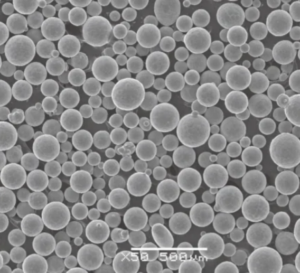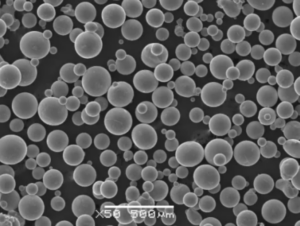概要
ガスアトマイズは、積層造形、冶金、材料科学などさまざまな産業で不可欠な金属粉末の製造における重要な技術である。この方法では、高圧ガスジェットを用いて溶融金属を微細な液滴に分解する。凝固すると、これらの液滴は均一で高品質の金属粉末を形成する。しかし、ガスアトマイズがこれほど重要なのはなぜでしょうか?ガスアトマイザーの世界に飛び込み、その動作原理、利点、具体的なモデルなどを探ってみましょう。
ガスアトマイズとは?
ガスアトマイズは、溶融金属を高速ガス流で微粒子にするプロセスです。基本的な原理は、金属を溶かしてノズルに通し、ガス(窒素、アルゴン、空気など)を使って液体流を微細な液滴に霧化する。この液滴はすぐに凝固して粉末粒子になる。
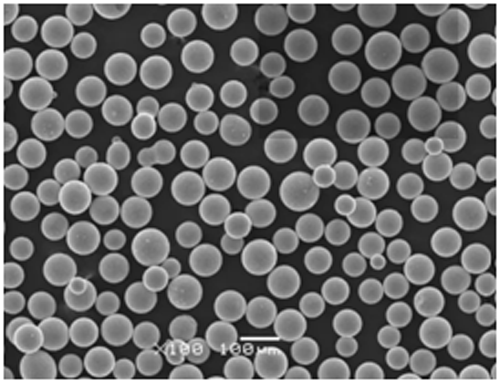
種類 金属粉末製造用ガスアトマイザー
様々なガスアトマイザーを理解するためには、その種類と機能を見ることが不可欠である。ここでは、業界で使用されている一般的なモデルをいくつか紹介する:
一般的なガス噴霧器モデル
| モデル | 説明 |
|---|---|
| GA-500 | 鉄粉・非鉄粉の大量生産に適した大容量アトマイザー。 |
| アトマイザーX | アルミニウムやチタン合金を含む幅広い金属粉末用に設計された多用途アトマイザー。 |
| マイクロジェット3000 | 高精度で研究や小規模生産に最適な小型アトマイザー。 |
| ウルトラファイン1500 | 航空宇宙およびエレクトロニクス分野の高性能用途向け超微粉末の製造に特化。 |
| エコアトム600 | 運用コストと環境への影響を低減するために最適化されたエネルギー効率に優れたモデル。 |
| タイタンマックス2000 | チタンとその合金用に特別に設計された堅牢なアトマイザーで、高い純度と一貫性を確保。 |
| スチールプロ400 | 鉄粉およびステンレス粉用に設計され、優れた粒度制御を提供します。 |
| アロイマスター750 | 高エントロピー合金を含む様々な合金粉末の製造に適した汎用アトマイザー。 |
| ナノスプレー500 | 先端材料用途のナノサイズ粒子の製造に注力。 |
| アルゴンフロー900 | 不活性雰囲気での霧化にアルゴンガスを使用し、アルミニウムやマグネシウムのような反応性の高い金属に最適。 |
金属粉末製造用ガスアトマイザーの構成
ガス噴霧器はいくつかの重要な部品で構成されており、それぞれが噴霧化プロセスにおいて重要な役割を果たしています。これらのコンポーネントとその機能を分解してみよう:
主要コンポーネントとその機能
| コンポーネント | 機能 |
|---|---|
| ノズル | 溶融金属とガスの流れを整え、正確なアトマイズを実現。 |
| るつぼ | 霧化の前に金属を含み、溶かす。 |
| ガス供給システム | 溶融金属のアトマイズに使用するガスを供給・制御する。 |
| 冷却室 | 霧化された金属液滴を急速に冷却し、粉末に固める。 |
| コレクター | 凝固した金属粉末粒子を収集し、さらに加工する。 |
| 制御システム | 微粒化プロセス全体を管理し、安定した粉体品質のための最適なパラメータを確保します。 |
| フィルターとセパレーター | 不純物を除去し、粉末粒子をサイズに基づいて分類する。 |
金属粉末製造用ガスアトマイザーの特徴
ガスアトマイザーの特性を理解することは、あなたのニーズに合ったモデルを選択するために非常に重要です。ここでは、いくつかの重要な特性を紹介する:
主な特徴
| 特徴 | 説明 |
|---|---|
| 粒度分布 | 特定の用途に重要な粉体粒子径の範囲と均一性を決定します。 |
| 純度 | 特に航空宇宙や医療用インプラントのような繊細な用途では、高純度レベルが不可欠である。 |
| 収量 | 溶融金属を粉末にする効率。 |
| 生産能力 | モデルによって異なり、事業規模に影響する。 |
| ガス消費量 | 運営コストと効率に影響を与える。 |
| 柔軟性 | さまざまな種類の金属や合金を加工する能力。 |
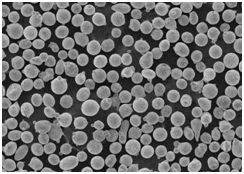
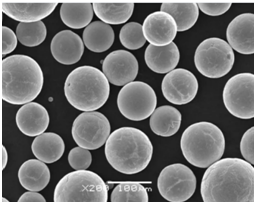
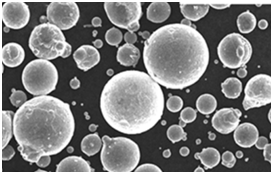
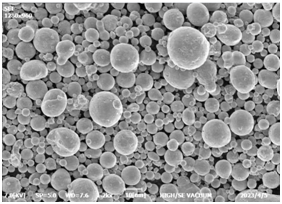
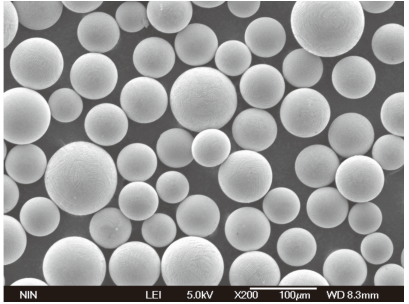
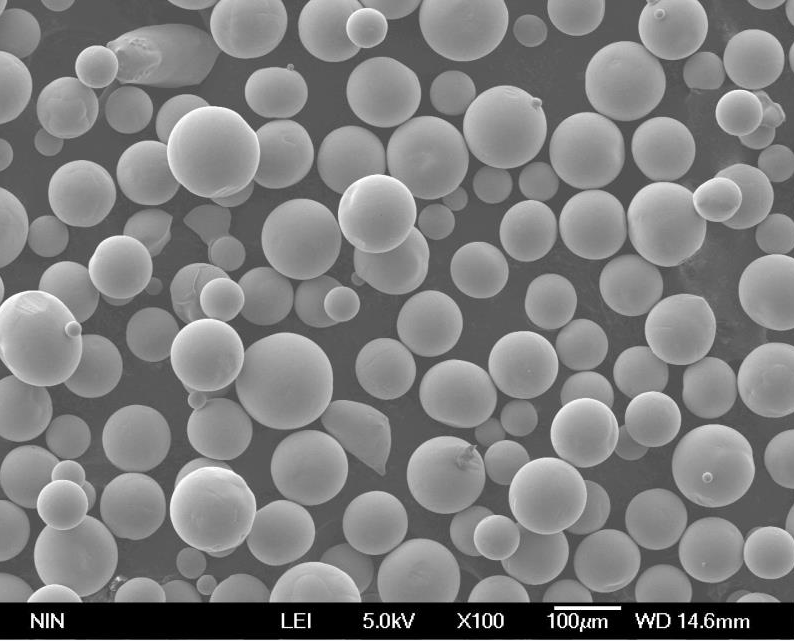
の利点 金属粉末製造用ガスアトマイザー
ガスアトマイズは、他の粉体製造方法と比較していくつかの利点があります。以下はその理由である:
ガスアトマイゼーションを選ぶ理由
- 高純度パウダー:不活性ガス雰囲気により、酸化や汚染を最小限に抑える。
- 均一な粒子径:高性能アプリケーションに不可欠な安定した品質を確保。
- 汎用性:様々な金属や合金から粉末を製造できる。
- スケーラビリティ:小規模生産にも大規模生産にも適している。
- 効率性:歩留まりが高く、廃棄物が少ないため、費用対効果が高い。
ガスアトマイザーで製造される金属粉末の用途
ガスアトマイズによって製造される金属粉末は、様々な産業で幅広い用途に使用されています。ここでは主な用途をいくつか紹介しよう:
産業用途
| 産業 | 用途 |
|---|---|
| 付加製造 | 複雑な金属部品やプロトタイプの3Dプリント。 |
| 航空宇宙 | 軽量高強度部品の製造。 |
| 自動車 | 耐摩耗性・高性能部品の製造。 |
| メディカル | インプラントや手術器具の製作。 |
| エレクトロニクス | 導電性部品と磁性部品の製造。 |
| エネルギー | エネルギーシステム用の効率的で耐久性のある部品の開発。 |
| 工具 | 高硬度工具および金型の製造。 |
仕様、サイズ、等級、規格
ガスアトマイザーとその結果である金属粉末を選択する際には、様々な仕様と規格を考慮することが重要である:
仕様概要
| 仕様 | 詳細 |
|---|---|
| 粒子径範囲 | 用途によって異なるが、通常1~150マイクロメートル。 |
| 純度レベル | 金属とプロセスによって異なるが、一般に高純度用途では99.9%を超える。 |
| 生産能力 | 1時間当たり数キログラムから数トンまで可能。 |
| ガスの種類 | 一般的に使用されるガスには、窒素、アルゴン、空気などがある。 |
| 規格 | ASTM、ISO、AMSなどの国際規格に準拠。 |
サプライヤーと価格詳細
品質とコスト効率を確保するためには、適切なサプライヤーを選ぶことが重要です。ここでは、代表的なサプライヤーと一般的な価格の概要をご紹介します:
主要サプライヤーと価格帯
| サプライヤー | 説明 | 価格帯 |
|---|---|---|
| ヘガネスAB | 様々な産業向けの高品質金属粉で有名。 | 50ドル/kg; 200ドル/kg |
| カーペンター添加剤 | アディティブ・マニュファクチャリングおよび高性能アプリケーション用パウダーの専門メーカー。 | 70ドル/kg; 250ドル/kg |
| サンドビック | 高純度・高均質な金属粉末の製造。 | kg あたり $60 – $220 |
| GKNアディティブ | 革新的なソリューションと高品質のパウダーで知られる。 | kg あたり $80 – $300 |
| LPWテクノロジー | 3Dプリンティングおよび先端製造用の金属粉末に注力。 | kgあたり$75 – $280 |
ガスアトマイザーの利点と限界
ガスアトマイザーには、それぞれ長所と短所がある。以下はその比較である:
長所と短所の比較
| メリット | 制限事項 |
|---|---|
| 高純度 | 高いイニシャルコスト:ガスアトマイザーは一般に、購入とセットアップに費用がかかる。 |
| 均一な粒子径 | ガス消費量:ガス消費量が多いと、運用コストの増加につながる。 |
| 汎用性 | 複雑な操作:熟練したオペレーターと精密な制御システムを必要とする。 |
| スケーラビリティ | メンテナンス:定期的なメンテナンスが必要です。 |
| 効率性 | 材料の制限:すべての金属や合金がガスアトマイズに適しているわけではない。 |
ニーズに合ったガスアトマイザーの選び方
適切なガスアトマイザーを選択するには、いくつかの要因を考慮する必要があります。ここでは、あなたを導くためのいくつかのヒントを紹介します:
考慮すべき要素
- 素材適合性:アトマイザーが、処理する必要のある金属や合金を処理できることを確認する。
- 生産能力:アトマイザーの容量を生産要件に合わせます。
- 純度要件:必要な純度のパウダーを製造できるアトマイザーを選びましょう。
- コスト効率:初期投資と継続的な運用コストの両方を考慮する。
- サプライヤーの評判:品質と信頼性で定評のあるサプライヤーを選ぶこと。

よくある質問
| 質問 | 回答 |
|---|---|
| ガスアトマイザーを使って霧化できる金属は? | 一般的な金属には、アルミニウム、チタン、スチール、ニッケル、各種合金がある。 |
| ガス霧化は水霧化と比較してどうですか? | ガスアトマイズは一般に、水アトマイズに比べて純度が高く、粒子径が均一である。 |
| ガスアトマイズ粉末の典型的な粒度範囲は? | 粒子径はアトマイザーとプロセスパラメーターによって1~150マイクロメートルの範囲になる。 |
| ガスアトマイズでよく使われるガスは何ですか? | 窒素とアルゴンは、その不活性な特性により、酸化や汚染を低減するため、最も一般的に使用されるガスである。 |
| ガス噴霧は環境に優しいか? | ガスアトマイゼーションは一般的に他の方法よりもクリーンだが、それでもエネルギーとガス消費に大きなフットプリントがある。 |
| ガスアトマイザーはナノサイズの粉末を製造できますか? | そう、ナノスプレー500のような専用アトマイザーは、ナノサイズの粒子を生成するように設計されている。 |
| ガスアトマイズ粉末が最も恩恵を受ける産業は? | 航空宇宙、自動車、医療、積層造形などの産業は、ガスアトマイズ粉末の高い品質から大きな恩恵を受けている。 |
| ガスアトマイザーのメンテナンス方法は? | 定期的なメンテナンスには、ノズルの清掃、ガスラインの点検、るつぼに汚れがないことの確認などが含まれる。 |
| ガスアトマイザーの価格帯は? | ガスアトマイザーは、大きさや能力にもよるが、10万ドルから数百万ドルのものまである。 |
| ガス噴霧に安全上の問題はありますか? | そう、高圧ガスや溶融金属の取り扱いには、事故を防ぎ、作業者の安全を確保するための厳格な安全プロトコルが必要なのだ。 |
結論
ガスアトマイズは、様々な高度な用途に不可欠な高品質の金属粉末を製造するための洗練された非常に効果的な方法です。ガスアトマイザーの種類、構成部品、利点、用途を理解することで、どの技術がお客様のニーズに最も適しているか、十分な情報を得た上で決定することができます。航空宇宙、自動車、医療、添加物製造のいずれにおいても、適切なガスアトマイザーを選択することで、生産能力と製品品質を大幅に向上させることができます。
